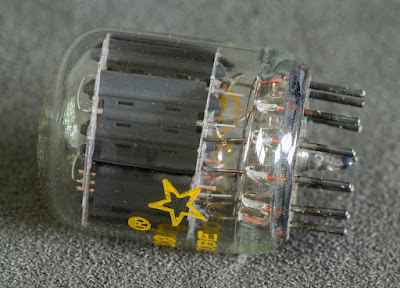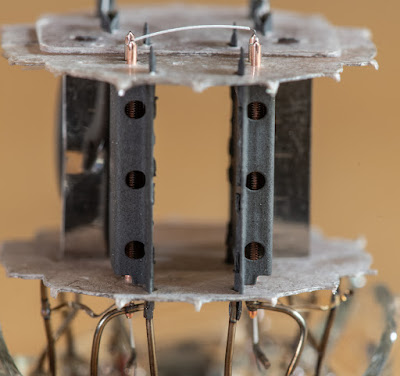Hi!
Regular readers of my blog are aware that I am quite fond of Compactron type tubes. So here is another specimen from my stash, the 6AG11.
The 6AG11 is a duplex diode and twin triode in one bottle. That is 4 elements. It makes use of all of the 12 pins of the Compactron base. The tube was developed for use in FM receivers.
As such it is a great example of the Compactron series which was introduced as an attempt to integrate more elements into one bottle. For some background on the history of Compactron tubes, read the 6GE5 tube of the month post. The 6AG11 contains two triode systems with the same parameters. They have an amplification factor of 66 which makes them high mu triodes. That amplification factor comes at 8500 Ohm plate resistance which translates to a quite healthy transconductance of 7800 Micromhos. This makes it seem quite useable for phono stages. In addition there are 2 diodes. These are rated for very low 5mA of continuous current. They are meant for use in the multiplexer part of the receiver. Don't think bout using them for power supply rectification. Except maybe for extremely lowcurrent supplies, for example a bias voltage. However the data sheet does not give any indication of allowed plate voltage or peak inverse voltage. These are most likely quite low. That still leaves two interesting triode sections in the bottle. As the prefix of the type designation indicates, the heater voltage s 6.3V and the heater consumes 0.75A. Like most of the Compactron tubes this type is largely ignored nowadays and if you find any they are probably very cheap since tube sellers want to get rid of them. Don't have too high expectations with regard to linearity as that was not necessarily of priority for the intended use of the tube. Here are the plate curves:

























































